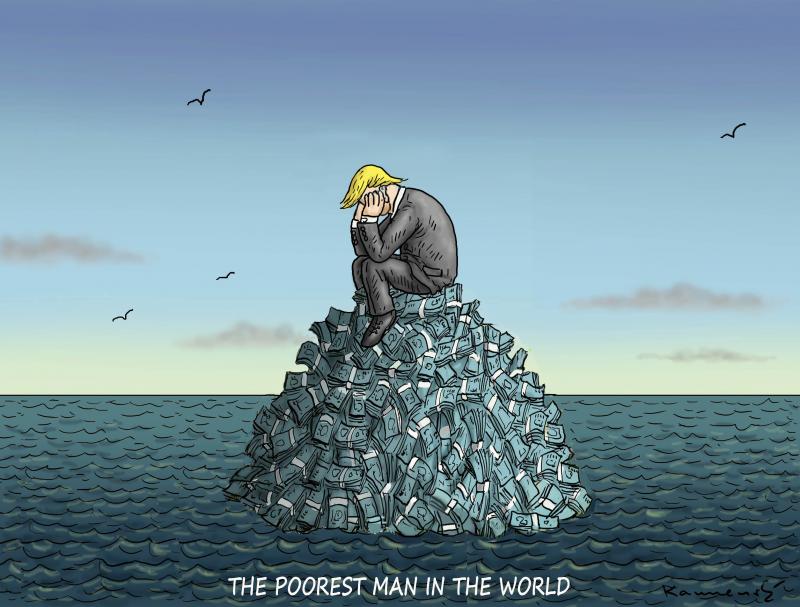Who Is The Poorest Person In The World? Unveiling Their Story And Struggles
Let’s dive straight into something that might sound heavy but is undeniably important. The question "Who is the poorest person in the world?" isn’t just a curious query; it’s a deep dive into the realities of global poverty. Poverty isn’t just about lack of money—it’s about lack of opportunities, resources, and hope. It’s about the millions who wake up every day wondering if they’ll have food on their table or a roof over their heads.
Now, before we get into the nitty-gritty, let’s pause for a moment. This isn’t just about numbers or statistics. It’s about people—real human beings whose lives are shaped by circumstances beyond their control. Poverty affects individuals, families, and entire communities. But what does it mean to be the "poorest person"? Is it even possible to pinpoint one individual when millions are struggling to survive?
As we explore this topic, we’ll uncover stories, facts, and insights that might challenge your perspective. This isn’t just about identifying someone—it’s about understanding the systemic issues that keep people trapped in poverty. So, grab a cup of coffee, sit back, and let’s unravel this together.
Read also:Elizabeth Rose Cameron The Rising Star In The Entertainment World
Table of Contents
- Biography of the Poorest Person
- Global Poverty Overview
- Defining Poverty
- Causes of Poverty
- Effects of Poverty
- Solutions to Poverty
- Poverty Statistics
- Human Stories Behind Poverty
- Global Efforts to End Poverty
- Conclusion
Biography of the Poorest Person
Alright, let’s start with the basics. When we talk about the poorest person in the world, we’re not necessarily talking about someone with a specific name or face. Poverty isn’t always about individual struggles—it’s often about systemic failures. But for the sake of understanding, let’s paint a picture.
Who Could Be the Poorest Person?
Imagine someone living in a remote village in Sub-Saharan Africa or rural parts of South Asia. They might not have access to clean water, electricity, or education. Their daily income might be less than $1.90—the global poverty line set by the World Bank. This person isn’t just struggling to survive; they’re fighting an uphill battle every single day.
Here’s a quick glimpse into their life:
| Attribute | Details |
|---|---|
| Name | Not necessarily identifiable |
| Location | Sub-Saharan Africa, South Asia, or other impoverished regions |
| Income | Less than $1.90 per day |
| Access to Resources | Limited or nonexistent |
| Education | Little to no formal education |
Global Poverty Overview
Now that we’ve got a basic understanding of who the poorest person might be, let’s zoom out and look at the bigger picture. Global poverty is a massive issue that affects millions of people worldwide. According to the World Bank, around 700 million people live below the poverty line.
But here’s the kicker: poverty isn’t just about money. It’s about access to healthcare, education, and basic human rights. People living in poverty often face multiple challenges that make it nearly impossible to break free from the cycle.
Defining Poverty
Let’s break it down. Poverty can be defined in many ways, but the most common measure is income-based. The World Bank uses a threshold of $1.90 per day to determine extreme poverty. But there’s more to it than just numbers.
Read also:Lisa Bonet Vater A Comprehensive Exploration Of Her Life Career And Legacy
Types of Poverty
- Absolute Poverty: When someone lacks the basic necessities to survive, like food, water, and shelter.
- Relative Poverty: When someone earns less than the average income in their country, making it hard to afford basic living standards.
- Situational Poverty: Temporary poverty caused by unforeseen events, like a natural disaster or job loss.
- Generational Poverty: Poverty that’s passed down through generations due to lack of opportunities and resources.
Causes of Poverty
So, why does poverty exist? It’s not just one factor—it’s a combination of many. Let’s take a look at some of the main causes:
1. Lack of Education
Education is key to breaking the cycle of poverty. Without access to quality education, people are less likely to secure well-paying jobs.
2. Economic Inequality
Wealth distribution plays a huge role in poverty. In many countries, the rich get richer while the poor struggle to make ends meet.
3. Corruption
Corruption in governments and institutions can lead to misallocation of resources, leaving the poorest behind.
4. Conflict and War
Regions affected by conflict often suffer from severe poverty due to destruction of infrastructure and displacement of people.
Effects of Poverty
Poverty doesn’t just affect individuals—it affects entire communities and societies. Here are some of the most significant effects:
- Health Issues: People living in poverty often lack access to healthcare, leading to higher rates of disease and mortality.
- Malnutrition: Limited access to food results in undernourishment, stunting growth and development.
- Low Life Expectancy: Poverty is directly linked to shorter lifespans due to poor living conditions and lack of medical care.
- Increased Crime Rates: Poverty can drive people to commit crimes as a means of survival.
Solutions to Poverty
Now for the good news: poverty isn’t an unsolvable problem. There are many ways to address it, and we’ve already seen progress in some areas. Here are a few solutions:
1. Education
Investing in education is one of the most effective ways to combat poverty. It empowers individuals and gives them the tools they need to succeed.
2. Economic Development
Creating jobs and boosting local economies can help lift people out of poverty. Governments and organizations can play a key role in this.
3. Social Safety Nets
Programs like food assistance, healthcare subsidies, and unemployment benefits can provide a safety net for those in need.
Poverty Statistics
Data speaks volumes. Here are some eye-opening statistics about global poverty:
- Approximately 10% of the world’s population lives in extreme poverty.
- Sub-Saharan Africa has the highest poverty rate, with over 40% of the population living below the poverty line.
- Women and children are disproportionately affected by poverty.
- By 2030, the UN aims to eradicate extreme poverty for all people everywhere.
Human Stories Behind Poverty
Numbers are important, but they don’t tell the whole story. Let’s look at some real-life examples of people who’ve faced poverty and how they’ve overcome it.
Meet Aisha
Aisha is a single mother from Kenya who grew up in poverty. She struggled to provide for her children but managed to secure a scholarship to attend university. Today, she works as a teacher and advocates for education in her community.
Meet Raj
Raj is a farmer from India who faced financial difficulties due to crop failures. With the help of microfinance programs, he was able to start a small business and improve his family’s living conditions.
Global Efforts to End Poverty
Many organizations and governments are working tirelessly to combat poverty. The United Nations’ Sustainable Development Goals (SDGs) include eradicating poverty by 2030. Here are a few notable efforts:
- World Bank: Provides loans and grants to developing countries to fund poverty-reduction programs.
- UNICEF: Focuses on improving education and healthcare for children in impoverished areas.
- NGOs: Organizations like Oxfam and CARE work on the ground to provide aid and support to those in need.
Conclusion
So, who is the poorest person in the world? The truth is, it’s not just one person—it’s millions of people facing similar struggles. Poverty is a complex issue that requires a multifaceted approach to solve. But there’s hope. Through education, economic development, and global efforts, we can make a difference.
We urge you to take action. Whether it’s donating to a charity, volunteering your time, or spreading awareness, every little bit helps. Share this article with your friends and family to keep the conversation going. Together, we can work towards a world where no one has to ask, "Who is the poorest person in the world?"


